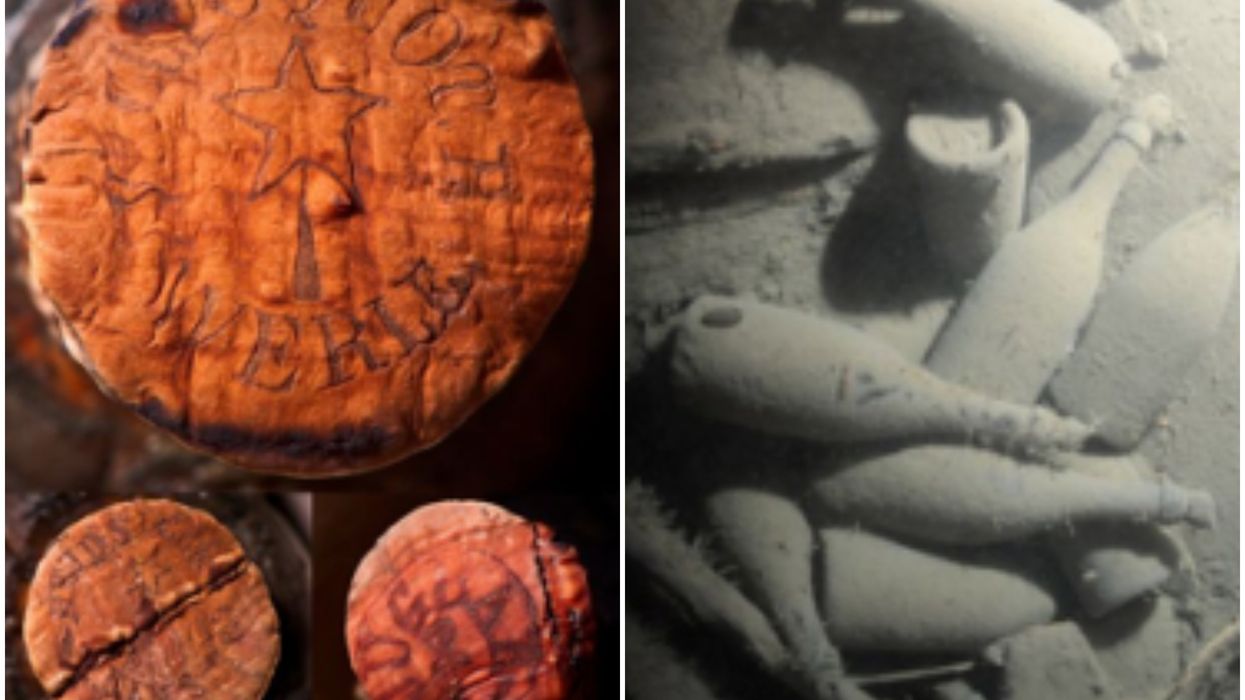Science & Tech
Harriet Brewis
Dec 06, 2023

The unopened bottles of champane were found at the bottom of the Baltic Sea
(Visit Åland)
When we think of a treasure chest prised from an ancient shipwreck, the image that springs to mind is of a wooden box stuffed to the brim with coins, necklaces and jewels.
Of course, the reality isn’t quite so neat and sparkly.
Still, as one group of explorers learned, even a trove of musty old bottles can be well worth diving to the bottom of the ocean for.
The cache of 168 champagne bottles – including 47 of Veuve Clicquot – was retrieved back in 2010 from a ship that had sunk in the Baltic Sea in 1852.
Amazingly, the bottles were still full, drinkable, and worth a glass-spilling amount of money.
At an auction held two years after the discovery, 11 of the bottles were sold for a combined total of $156,000 (around £98,280 at the time).
Then, another three years later, biochemist Philippe Jeandet, of the University of Reims Champagne-Ardenne, was given samples from three of the bottles to analyse.
First, they were given to expert wine tasters to compare with three modern champagne samples.
This in itself was significant given that, as Prof Jeandet noted in a paper on his findings, the champagne was most likely “the oldest to have ever been tasted”.

And certainly, the three so-called “Baltic samples” tasted old. Or, at the very least, different.
“At first, the Baltic samples were described using terms such as ‘animal notes,’ ‘wet hair,’ ‘reduction,’ and sometimes ‘cheesy,’ the French professor revealed.
However, he went on: “Upon swirling the wine in the glass to oxygenate it, the aroma became far more pleasant, with the main aromas described as empyreumatic (burnt), grilled, spicy, smoky, and leathery, together with fruity and floral notes.”
Interestingly, Prof Jeandet said that ending up on the sea floor meant that the champagnes aged in “close-to-perfect conditions” because they had been kept in total darkness at a fairly constant temperature (2-4C) and in conditions of low salinity.
But the best thing about the discovery, in his expert opinion, was they provided a “glimpse into the little-known history of winemaking".
Specialist testing of the metabolites and ions present in the champagne provided Prof Jeandet and his colleagues with “access to [their] detailed composition of these wines”.
It revealed, for instance, “unexpected chemical characteristics in terms of small ion, sugar, and acid contents as well as markers of barrel ageing,” he said.
The science of archaeochemistry – in which the most recent analytical techniques are applied to ancient samples – now offers scientists an unprecedented understanding of human culture throughout history.
In this case, it also offers a good excuse to drink on the job.
Sign up for our free Indy100 weekly newsletter
Have your say in our news democracy. Click the upvote icon at the top of the page to help raise this article through the indy100 rankings
Top 100
The Conversation (0)













